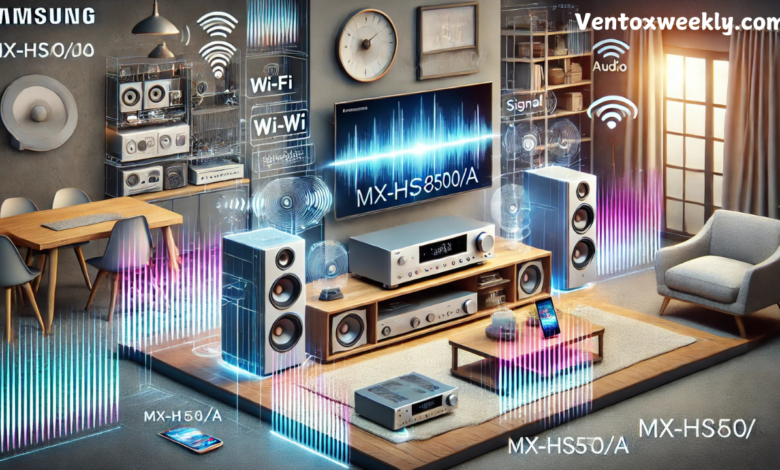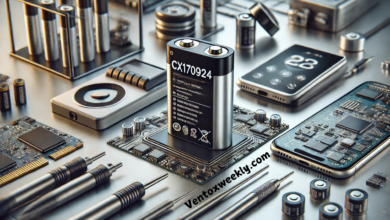Samsung MX-HS8500/A Interferencia: Causes, Solutions, and Tips to Enhance Audio Experience

The Samsung MX-HS8500/A is renowned for delivering powerful, high-quality sound and is a popular choice for music enthusiasts and audiophiles. However, some users report interference issues that affect audio quality, from static noise to interrupted connections. This article will explore the causes of these interference problems, ways to troubleshoot and solve them, and tips for ensuring the best performance from your Samsung MX-HS8500/A system. Whether you’re experiencing connectivity issues or signal disruptions, this guide will provide a comprehensive look into resolving interference.
Understanding Interference in the Samsung MX-HS8500/A
Interference, in the context of audio devices like the Samsung MX-HS8500/A, refers to disruptions or distortions in sound caused by external electronic signals or internal technical issues. These issues can range from subtle hums or crackles to complete signal loss, impacting your listening experience. Understanding the root causes of interference is essential for resolving it effectively.
Common Causes of Interference in the Samsung MX-HS8500/A
- Proximity to Other Electronic Devices
- Many household devices, like microwaves, Wi-Fi routers, and cordless phones, emit electromagnetic signals that can interfere with audio systems. When these devices are close to your Samsung MX-HS8500/A, they may disrupt the signal, leading to audio distortion or connectivity issues.
- Environmental Obstacles
- Physical barriers such as walls, large furniture pieces, or metal surfaces can block or reflect wireless signals, potentially interfering with Bluetooth or Wi-Fi connections on your Samsung MX-HS8500/A. Such obstacles can also signal weakness, contributing to a less reliable audio experience.
- Faulty or Loose Cables
- Damaged or improperly connected cables are common culprits in audio interference. A loose cable can create static or cause sound to drop in and out, while worn-out cables may generate buzzing or crackling noises.
- Outdated Firmware
- Firmware updates provided by Samsung can improve device performance, fix bugs, and address compatibility issues with other devices. If your system firmware is obsolete, it may be more susceptible to interference from newer devices or networks.
- Signal Overlap
- If multiple Bluetooth or Wi-Fi devices operate near each other, their signals can overlap, creating interference. This is particularly true if they are on the same frequency, as is familiar with Wi-Fi routers and Bluetooth devices, leading to compromised audio performance.
How to Fix Interference Issues in the Samsung MX-HS8500/A
- Reposition the Audio System
- The first step in troubleshooting interference is positioning your Samsung MX-HS8500/A away from other electronic devices. Try placing the system in an open area with minimal barriers and away from high-interference appliances, such as microwaves or Wi-Fi routers.
- Check and Secure Connections
- Ensure all cables are securely connected and inspect them for signs of wear or damage. If necessary, replace old or faulty cables to eliminate potential interference sources. Quality cables not only improve sound quality but also reduce the risk of signal interference.
- Update the Firmware
- Regularly updating your firmware can improve your audio system’s compatibility with other devices and address software-related interference issues. Visit Samsung’s official website or use the Samsung app to check for the latest firmware updates for your MX-HS8500/A.
- Reduce Nearby Wireless Devices
- Limiting the number of wireless devices near your audio system can decrease signal overlap and interference. Turn off or move any unnecessary devices, and if possible, avoid using Bluetooth and Wi-Fi devices simultaneously.
- Use Shielded Cables and Adapters
- Shielded cables are designed to prevent electromagnetic interference. Switching to high-quality, shielded wires can significantly reduce static noise and enhance sound clarity, making your listening experience with the Samsung MX-HS8500/A more enjoyable.
Advanced Solutions to Prevent Interference
- Reconfigure Your Wi-Fi Router
- If you have identified Wi-Fi as a source of interference, consider changing the frequency of your Wi-Fi router from 2.4 GHz to 5 GHz. This can reduce overlap with Bluetooth devices and improve the clarity of your audio signals.
- Invest in a Power Conditioner
- Power conditioners help manage and filter the power going to your audio system, reducing the possibility of interference caused by power fluctuations. This is especially useful in areas with unstable power supplies, where the power quality can impact your Samsung MX-HS8500/A’s performance.
- Use a Ground Loop Isolator
- Ground loop isolators are affordable devices that eliminate humming and buzzing sounds caused by interference between connected audio equipment. Installing a ground loop isolator between the audio system and other devices can eliminate these unwanted noises.
- Isolate the Audio Equipment from Metal Surfaces
- Metal surfaces are known to reflect and distort wireless signals. Try placing your Samsung MX-HS8500/A on a wooden or non-metallic surface to minimize signal interference, ensuring smoother audio quality.
- Seek Professional Assistance
- If you continue experiencing interference after implementing these solutions, professional audio technicians can help diagnose and resolve complex interference issues. Consulting a professional can help you optimize your audio setup for maximum performance.
Frequently Asked Questions about Samsung MX-HS8500/A Interference
How do I know if my Samsung MX-HS8500/A is experiencing interference?
Common signs of interference include static noise, sudden audio cut-offs, and distorted sound quality. If these issues occur consistently, they may be caused by external electronic interference or device compatibility issues.
Can an outdated Bluetooth version cause interference?
Yes, outdated Bluetooth technology can sometimes cause compatibility issues with newer devices, leading to interference. Updating the firmware on your Samsung MX-HS8500/A can improve Bluetooth performance and resolve these problems.
Is it safe to use a power conditioner with my Samsung MX-HS8500/A?
Absolutely. A power conditioner can be beneficial in reducing interference caused by power fluctuations, ensuring cleaner, more stable power for your audio system.
Why does my audio system only experience interference at certain times?
During heavy internet usage, some devices emit stronger signals at specific times, such as Wi-Fi routers. Environmental changes, like adding new electronic devices or moving furniture, can also impact signal strength and cause intermittent interference.
Can physical barriers between devices affect Bluetooth connections?
Bluetooth signals are susceptible to physical barriers like walls and large furniture. Place your Samsung MX-HS8500/A in an open space with minimal obstacles for the best audio quality.
Conclusion: Enhancing Your Samsung MX-HS8500/A Audio Experience by Reducing Interference
Interference can be frustrating for Samsung MX-HS8500/A users, but understanding the causes and applying practical solutions can significantly improve audio quality and connectivity. By repositioning your audio system, checking connections, updating firmware, and managing nearby devices, you can minimize disruptions and enjoy a smooth, uninterrupted sound experience. Advanced options like power conditioners, ground loop isolators, or consulting a professional can provide additional peace of mind for those seeking to optimise performance further. With these steps, you’ll be well on your way to enjoying the full potential of your Samsung MX-HS8500/A, free from unwanted interference.




